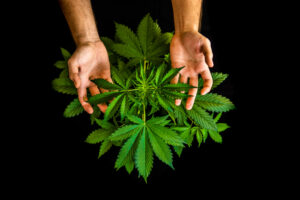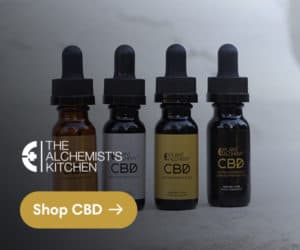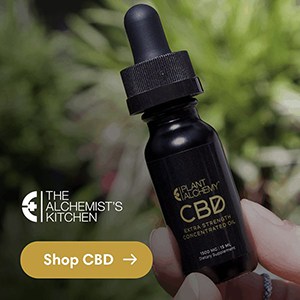A few years ago in Southern California, before the state legalized adult recreational use, there was a rumor going around that if you asked to see test results for cannabis products and a dispensary didn’t have or want to provide them (which was against the law), you could be refused service and evicted.
I decided to investigate, but my own fieldwork amounted to little more than a couple hundred extra miles on my car. Part of it was presentation: I’m white and female, so my budtenders weren’t expecting me to pose any kind of threat, journalistic or otherwise. Notably, the cannabis industry expert and educator who tipped me off on these practices was Black and male and therefore had access to totally different experiences in the industry (and the world).
The problem with testing—or lack thereof—presents a conundrum. Medicinal cannabis was forced underground by settler colonialism, so purveyors had to run clandestine operations to provide ailing folks with the medicine they needed. While new dispensaries are sprouting up everywhere, there are still major barriers to entry in the cannabis industry, and they continue to target already disenfranchised entrepreneurs disproportionately. In light of the inequities, finger-wagging new businesses for failing to do everything by the book doesn’t sit well, especially at a time when we’re climbing toward federal legalization, a time in which highlighting anything not 100% above board threatens to jeopardize this much-needed progress and the ancillary benefits it could bring, including not only safer products in the marketplace but also a more just playing field, leveled a little bit by the expunged records some states offer for prior cannabis convictions.
Need for Safe Cannabis Products
The need for safe products is clear. Contaminated cannabis can cause serious complications, even death—especially for immunocompromised patients. And while some folks don’t always have the resources they might need to tick every regulatory box; others avoid testing because it’s one less hoop to jump through.
What is it about the bud that makes it so hard to establish equitable and safe cultivation practices? Is it possible there is something about cannabis, specifically, that’s creating some of the challenges? The California Department of Pesticide Regulation website’s Cannabis Overview page greets browsers with an opening line as vague as it is succinct: “Cannabis: it’s just different.”

While there’s much to be said about how and why it’s different (and how and why it isn’t) by examining it in context, there’s an equally robust reservoir of information within the plant itself. From cannabinoids, flavonoids, and terpenes to contaminant levels and the nuances of serial propagation, cannabis material says as much about it as any historical overview.
Since laboratory testing is required at multiple stages throughout the cultivation, manufacturing, and distribution processes, patients living in states with legal medical or recreational use should be delighted to be able to request lab reports from their local dispensaries to find out exactly what’s in their flower, gaining not just information but peace of mind that what they’re about to inhale, apply, or ingest is of healing quality.
In reality, testing is frequently either not performed or conducted insufficiently. Among the bevy of reasons is that the market drives industry-wide prioritization of THC content and renders other data, such as pesticide and fungus levels, negligible. The data should not be nominal.
Protecting Ourselves and Our Bud
Steph Sherer, Executive Director and founder of Americans for Safe Access (ASA), the largest national member-based organization of patient advocates, boils it down: “The challenge here really is that this industry is still illegal federally.” This means there is a substantial lack of support for a multibillion-dollar and potentially life-saving (certainly quality of life-saving) industry still in its inception. And while lack of funds for adequate testing is a deterrent for many, it’s not the only obstacle.“The truth is that people are not seeing this as a priority; they’re taking a shortcut, and there’s no other way to say it,” Sherer explains.
The question becomes one of balancing the dual necessities of enforcing health and safety measures with maximizing the rights of folks working within and relying upon the industry. “As patient advocates we find ourselves stuck in this position where I honestly don’t believe that selling a contaminated product means you should spend ten years in prison. I have great respect for people who are willing to break the law to bring patients medication, but that doesn’t mean you can give us whatever you want. We do have to stand up for ourselves and assert our right to have safe products.”
James Jernee, co-founder of San Diego’s Torrey Pines Testing, which routinely tests edibles and sometimes flower, describes the range of his own experiences as both patient and scientist. “I haven’t been personally evicted,” he says, “but I have been told in not so many ways that there’s no data behind their word or excuses like we have the product, but the results aren’t here yet. When I tell them I’m from a testing lab, sometimes they’ve withheld products. Even among dispensaries that are good, there tends to be a spectrum of what they provide that’s homemade and [that they] may not want to be investigated. But I’ve also had people hand me products to test this and tell me what you think.” How many surprises does he come across? “30% of what we test is exactly what they thought it would be; other times, it takes tweaking,” Jernee explains. “[Testing is] not just a matter of safe or unsafe. The levels are also in question, so things not matching up is a big part of what we’re looking for.” In other words, THC is great, but when you start seeing claims that flower contains above about 27%, you should be skeptical. There are a lot of other things in cannabis, too. There’s got to be some plant in your plant.
So, how do you source safe cannabis products as a consumer? In addition to looking for organic, sun-grown, and whole-plant products, here are some tactics for obtaining clean cannabis, regardless of where you live.
Patient Focused Certification
Look for ASA’s Patient-Focused Certification label on your products. From seed to sale, this ASA program works to ensure that medicine complies with safe and reasonable industry regulations and is suitable for human consumption.
Know Your Rights
Different states have different laws regarding patients’ rights. The items on these lists are equally valuable to patients as to budtenders and manufacturers, so they’re worth consulting. Generally speaking, you have the right to cannabis/products that are free of contaminants such as mold, mildew, fungus, pesticides, and pests, and you have the right to know how your cannabis was produced.
Be Mindful of Your Vape
Vaping is still new, and not much is known about it yet. From contaminants to potential danger in additives like vitamin E acetate, vaping has caused some controversy after a string of related deaths. If you’re concerned, use the other items on this list to help you source safer alternatives.
Build Relationships
This last piece of advice involves a little legwork, but it might be worth your while. It also applies to sourcing herbal medicine more broadly and even to procuring your kitchen tomatoes (not that those can’t be medicinal, but that’s another article).
Keiko Beatie, former cannabis distributor, cultivator, and industry specialist, advises learning more about the people at various levels of your distribution chain. “Really get to know your dispensary and your budtenders and see if you feel they have integrity along with the product they’re selling,” she suggests. If you have the time and the ability, developing relationships—especially with cultivators—is key.
An expanding industry means a lot of newcomers, and mistakes are inevitable. “But,” she says, “just like any other commodity business, some people will succeed, some people won’t. Some will rise to the top—hopefully those are the people with integrity—and some will hopefully find another way they can support the industry.”








